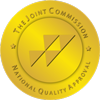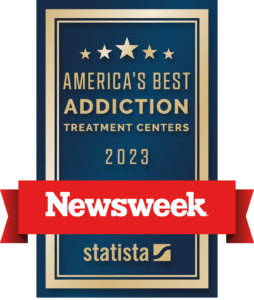Eating Disorder and Substance Misuse
Eating disorders, such as anorexia nervosa, bulimia nervosa, and binge eating, often co-occur with substance misuse. Struggling with an eating disorder and substance misuse can cause emotional, physical, and social problems. However, combining alcohol and eating disorders are typically less common than an eating disorder and addictions to stimulants.
What Is An Eating Disorder?
An eating disorder is an illness characterized by severe eating habits and related thoughts and emotions. An individual preoccupied with food, body shape, and weight may be struggling with an eating disorder. However, this mental illness is severe and is often fatal.
Eating disorders are mental conditions that cause incredibly unhealthy eating habits. They often begin with an obsession with food and the body’s weight and shape. Individuals can have various symptoms such as restricting food, binge eating, vomiting, or overexercising after eating.
What are the Common Types of Eating Disorders?

Eating disorders are not a lifestyle choice; they are medical conditions. They prevent the body from receiving proper nutrition. Although there are various eating disorders, we will discuss the three most common types, anorexia nervosa, bulimia nervosa, and binge eating.
Anorexia Nervosa
One well-known eating disorder is anorexia nervosa. It typically develops in children and young adult years and generally affects women more than men.
Individuals struggling with anorexia nervosa generally see themselves as overweight even when they are extremely underweight. Individuals typically weigh themselves constantly, avoid eating specific foods and are on strict calorie intake diets. Although anorexia nervosa is the least common of the three, it is the most serious. For example, it has the highest fatality rate of any mental disorder.
Bulimia Nervosa
Bulimia nervosa is a severe and life-threatening eating disorder. Individuals struggling with bulimia binge or eat a large amount of food in one sitting. Afterward, they purge the body with self-induced vomiting or laxatives.
Often, individuals with bulimia nervosa eat until they are painfully full. This behavior is because they cannot stop eating or control how much they eat. Furthermore, individuals typically binge on foods they try to avoid. Because people purge after eating, they generally maintain their weight.
Binge Eating Disorder
Binge eating disorder is an extremely common eating disorder in the United States. Although it generally begins in childhood and young adult years, it can develop at any age. Individuals with a binge eating disorder typically eat large amounts of food in a short time.
Individuals also experience a lack of control during their binges. However, they never restrict calories or display purging behaviors such as vomiting and exercise. Because this behavior leads to obesity, the risk of heart disease, stroke, and kidney disease is high.
Why Do Eating Disorders Develop?
There are many misconceptions on why eating disorders develop. They are rarely about wanting to be thin or about food. Individuals instead use unhealthy eating behaviors to cope with overwhelming emotions and stressful situations. And while it may ease anxiety at the moment, it increases anxiety and other health issues in the long-term.

People do not choose to have an eating disorder. It is a mental illness. Eating disorders are generally not caused by one single thing but by a complex mixture of factors. These factors include biological, genetic, behavioral, psychological, and culture.
Biology
Individuals struggling with an eating disorder may have a chemical imbalance that interferes with appetite, mood, sleep, and stress. For instance, cortisol levels in those with anorexia and bulimia are higher than those without. Seratonin levels in those with anorexia may also be higher, causing a constant state of stress.
Genetics
Genetics plays a significant role in eating disorders. For example, eating disorders often run on families. Furthermore, identical twins are more at risk than fraternal twins.
Psychological
There are a number of psychological factors that contribute to an eating disorder. For instance, eating disorders are common in those with clinical depression, anxiety, and OCD. Other psychological factors include:
- Low self-esteem
- Feeling inadequate or hopeless
- Trouble expressing emotions
- Impulsive
- Perfectionism
Environment
Environmental factors are significant in developing eating disorders. These factors include:
- Childhood trauma
- Family problems
- Physical, mental, or sexual abuse
- Involvement in activities such as dance, gymnastics, running, and wrestling
- Being bullied
Culture
Both dieting and the desire to be thin increase individuals developing an eating disorder. Unfortunately, our society encourages people to be unhappy with their bodies. Besides magazines shoving rapid weight loss plans and counting calories, other cultural factors include:
- Beauty standards that promote a thin body
- Associating being thin with being attractive and successful
- Media focuses on being thin and in shape
- Negative words that cause food and eating to be seen as undesirable
Comorbidity of an Eating Disorder and Substance Misuse
The co-occurrence rate of an eating disorder and addictions can vary. According to NEDA ( The National Eating Disorders Association), 50 percent of individuals with an eating disorder also struggle with substance misuse. While almost 35 percent of those who misuse drugs and alcohol also had an eating disorder.
These rates vary due to many factors. For example, is the study community-based or treatment-based, which eating disorder, which substance, and one-time use vs. physiological dependence. Furthermore, most studies on eating disorder and addictions typically focus on women. The few studies that include men show similar rates of comorbidity between an eating disorder and substance misuse.

Commonly Diagnosed Eating Disorder and Substance Misuse Disorders
The combination of an eating disorder and addiction is most often seen between a bulimia nervosa eating disorder and substance misuse. However, it is also seen in anorexia nervosa. Furthermore, individuals with both bulimia nervosa and anorexia nervosa are the most likely to misuse drugs and alcohol.
Common substances misused with eating disorders include:
- Alcohol
- Sedatives
- Cannabis
- Caffeine pills
- Stimulants
- Hallucinogens
- Opiates
- Cocaine or crack
Alcohol and Eating Disorders
Individuals with bulimia nervosa typically have the highest rates of alcohol use compared to other eating disorders. In contrast, individuals with restrictive anorexia nervosa are the least likely to misuse substances such as alcohol.
Like individuals who misuse alcohol, bulimics typically have impulsive personalities. They can also become addicted to the bingeing and purging of food. These behaviors may begin as a way to control body weight. But, they are also a way to cope with the lack of control in other aspects of life.
Besides, alcohol and eating disorders are a way to numb or distract oneself from guilt, shame, and depression. Furthermore, individuals with bulimia may also binge drink to help them vomit. This can lead to severe health issues such as dehydration, heart palpitations, and alcohol poisoning.
Drunkorexia: The Dangers of Alcohol and Eating Disorders
When individuals combine alcohol and eating disorders, it can be disastrous. Drunkorexia is when individuals replace meals with alcohol. Although it isn’t a clinical term, many people use it to describe behaviors such as skipping meals and purging to offset the calories from alcohol.
If an individual is not getting enough of their calories from food but replacing it with calories from alcohol, it is dangerous. Because alcohol is empty calories, drunkorexia increases the risk of dehydration, vitamin depletion, and other severe physical and mental health problems.
Furthermore, drunkorexia increases the risk of developing an eating disorder and addictions. It also encourages binge drinking. But, binge drinking, alcohol, and substance misuse take a toll on the physical appearance. An eating disorder and addictions causes:
- Quickening the aging process
- Ance-prone skin
- Brittle hair and nails
- Anemia
- Dizziness
- Bloating and constipation
Treating the Dual Diagnosis: Eating Disorder and Substance Misuse
Struggling with an eating disorder is not easy. To cope with the distress of eating disorders, many people self-medicate with drugs or alcohol. But, this adds more challenges and can lead to a substance use disorder.
Because an eating disorder and addictions are both chronic and fatal diseases, it’s crucial to seek treatment for both. This treatment is commonly called dual diagnosis treatment. The best chance at maintaining Recovery for Life is to treat the eating disorder and addictions together.
Generally, when individuals are screened for either eating disorders or addiction, they are also evaluated for the other. But, finding a facility that treats both can be difficult. Most addiction treatment centers are not set-up for mealtime supervision that is necessary for treating eating disorders. However, therapy is the cornerstone of mental health treatment, and the following therapies are important to look for in treatment.
Cognitive-Behavioral Therapy
Cognitive-behavioral therapy or CBT is a short-term therapy that focuses on your thoughts and beliefs surrounding an eating disorder and addictions. In CBT, you work to change unhealthy thoughts and beliefs about alcohol and eating disorders to healthy ones. These changes are crucial to maintaining recovery.
Dialectical Behavior Therapy
Dialectical behavior therapy or DBT is the most successful therapy in treating an eating disorder and addictions. The belief in DBT focuses on changing behaviors. The mindfulness skills learned in DBT help with emotion regulation, distress tolerance, and personal relationships.
Comprehensive Eating Disorder and Substance Misuse Treatment at Sana Lake Recovery
Our dual diagnosis treatment can help if you or a loved one struggles with an eating disorder and substance misuse. Is consuming alcohol and eating disorders wearing you down mentally? Our comprehensive treatment and individualized treatment plans can prepare you to live your best life free of an eating disorder and addictions. Contact us today to find out more.



